Media | Articles
Can you live with patina?

If you watch too many automotive cable shows and read too many articles on collecting, the mantra that gets beaten into your brain is to buy the best car in the best possible condition, as that’s what’s likely to appreciate the most. Another way this sometimes gets phrased is, “You can’t spend too much—you can only buy too soon.”
That’s all well and fine if you have the disposable income to spring for the best of the best. However, many of us don’t.
One way out of this trap of a surplus of passion and a deficit of funds is to buy a car that doesn’t even attempt to be a shiny lust object and instead is one that proudly wears its age and experience out in the open.
I’m talking about patina.
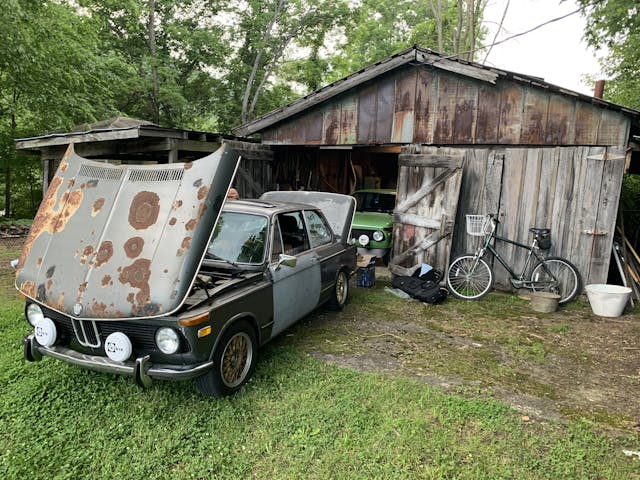
If you’ve made it this far, you’re probably aware that patina can be desirable. Battered-looking goods have their own appeal, even apart from the monetary value that untouched originality occasionally brings. That’s why home furnishing stores are full of new cabinets that have that distressed French farmhouse look and why Fender sells a “Time Machine” line—new electric guitars pre-distressed at the factory to simulate decades of stage wear. This “relic-ing” has spread into the car world as well. Some of it may have been kick-started by the rat-rod movement that began in the hot-rod world 30 years ago, where a backlash against the cost of shiny customs resulted in home-built cars with oxidized body panels, no chrome, and steel wheels. Ironically, the term “rat rod” has now morphed into a moniker for any car with an outrageously distressed finish, even if it’s sitting atop expensive oversize alloys.
Yet one of the biggest selling points of patina—the “real” kind, at least—comes down to dollars and sense: Worn cars are usually significantly less expensive than those in excellent condition and a bargain compared with those where every inch of the car has been brought up to like-new standards. This makes it possible for someone of modest means to buy their dream.
I’ll caution, though, that if you go this route, you need to be absolutely honest with yourself and aware of the fact that if you’ll never be happy unless you own a car in condition A, you should buy a car in condition A and not buy one in condition C and try to put it into condition A. Aside from the financial havoc that will likely cause, there’s a very real risk of mucking up the car.
Here’s the deal: A car’s appearance is a synergistic thing where the condition of the paint, the brightwork (the exterior chrome), and the interior all hang together and project a certain image. If you have a well-patinaed car that you want to “restore” (and I use that word in quotes because it means so many different things), you slide down an expensive slippery slope because you need to address all of the items that project that image. If you just paint the car, all the old chrome looks like hell. Replace the bumpers and trim with new, and all the rubber and glass look old. Complete the exterior refurbishment, and the interior shows its age.

It’s much easier—and less expensive—to live with a car where both exterior and interior already have a certain amount of wear on them. Since the car is nowhere near perfect, you’re not constantly chasing perfection because you’re not under the illusion that you’re going to reach it. And, since you’re less worried about dings from driving and parking, you’re more likely to use the car.
For these reasons, I’m a big believer in cars with patina. My 1973 BMW 3.0CSi is the only car I’ve ever had an outer-body restoration done on. All my other vintage cars have some degree of patina. My ’73 2002 and my Bavaria are lightly dinged survivors wearing original paint. The previous owner of my ’72 2002tii sanded off the rust spots and touched them up with doesn’t-quite-match, rattle-can Rust-Oleum. My ’75 2002—known as “Bertha”—has rust spots the size of dinner plates on the hood. My ’74 Lotus Europa Twin Cam Special was stored under a tarp in a storage container for over 30 years, which carved some interesting patterns into the dried-out, fragile paint.
Personally, I love the look of surface rust blooms against light-colored paint. It looks so organic—like flaming but done by nature. Of course, there’s a line between patina and just plain beat up, but most of us know that line when we see it. When it’s at its best, patina has the natural sensibility of Monet’s Water Lilies or the inherent rhythm of a Jackson Pollock abstract.
One misnomer about patina is that, since the car is already imperfect, you can drive it in any kind of weather. Any vintage car is inherently rust-prone, and a car that already has exposed patches of surface rust is even more so, so storing it outside, driving it in the rain, or—God forbid—in the snow and salt is likely to cause the rust to explode.
But this does raise the reasonable question of how to protect the surface rust that’s already there and prevent it from spreading or deepening. There are four basic approaches. Be aware that only the last won’t alter the patina’s original, baked-in-the-Arizona-sun look.
The first is to sand down any scaly rust that will fester, then spray clear coat. Make no mistake—this is painting, and as such, the quality is proportional to the amount of preparation. If the surface isn’t clean, the clear coat won’t adhere well and will eventually start to peel (hey, maybe you want peeling clear coat as part of the patina). And presumably you’re clear-coating the entire car, not only the surface-rusty area you want to preserve. If there’s flaking paint in addition to the rust, you can’t just clear-coat over it and trap it like a fly in amber; you’re going to need to sand it. Personally, I’m not a big fan of clear-coating patina, as it seems to me that if you’re going to prep a car and then shoot a hard coat of anything, you might as well go all in and paint it. Plus, “shiny patina” seems like an oxymoron.
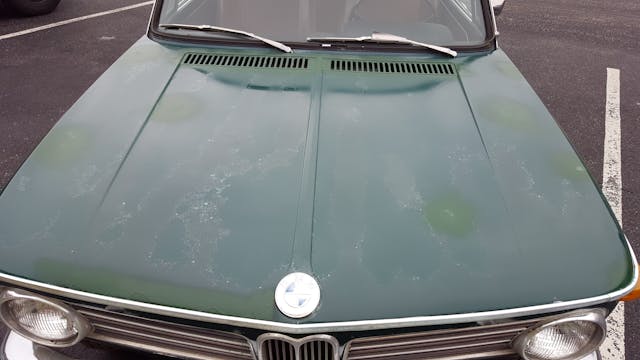
The second and widely popular approach is to wipe on an oil-based product such as boiled linseed oil (mainly a wood preservation product) cut with mineral spirits, or Penetrol (an additive for oil-based paints to help lessen brush and roller marks). Both work as rust inhibitors by providing a layer of oily protection and helping the surface to shed water. After treatment, the surface looks wetter, shinier, and darker, which can make both the paint and the rust colors pop more, though all these effects will fade within months, depending on the level of exposure.
Be aware, though, that this approach has downsides. The creeping nature of oil is good for getting into rust pores and inhibiting corrosion, but if in the future you want to have the car painted, it can be difficult to get the surface oil-free. Linseed oil and Penetrol will eventually harden, but until they do, they can be gooey, so don’t wipe them on when the pollen count is high. Even after hardening, they can get tacky on a hot day.
Marketplace
Buy and sell classics with confidence
The third approach is to do what you’d do on a car whose paint was simply faded—compound it and wax it. The idea is that the compounding will bring out the shine on the remaining paint, and the wax offers rusted areas some of the same moisture protection and water-shedding as the oil-based products while not penetrating as deeply into the metal and thus not being potentially troublesome if you later wish to paint the car.
After reading the above approaches, you can appreciate that, when you see a heavily patinaed car that’s shiny and whose colors pop like an exotic bird’s plumage, that’s not how it rolled out of the junkyard—work has been done on it to give it that look.
The fourth method is the one I prefer: Don’t touch it. I’d no sooner change the worn look of any of my cars than get plastic surgery on my own scarred and craggy face.
Find an imperfect car and then resist the urge to “fix” it. You’ll smile like an idiot when you drive it on a Sunday instead of bemoaning the fact that you always wanted one but couldn’t afford it.
***
Rob’s latest book, The Best Of The Hack Mechanic™: 35 years of hacks, kluges, and assorted automotive mayhem is available on Amazon here. His other seven books are available here on Amazon, or you can order personally-inscribed copies from Rob’s website, www.robsiegel.com.
Check out the Hagerty Media homepage so you don’t miss a single story, or better yet, bookmark it. To get our best stories delivered right to your inbox, subscribe to our newsletters.
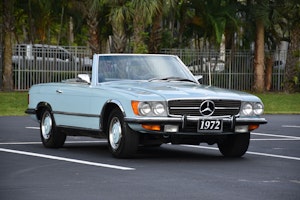
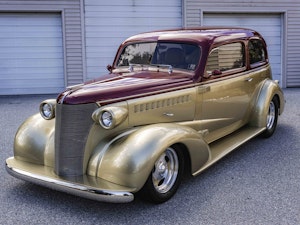
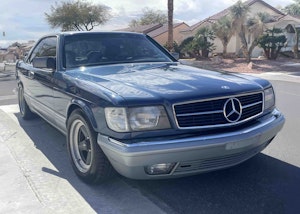
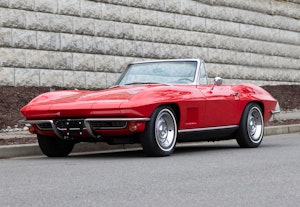

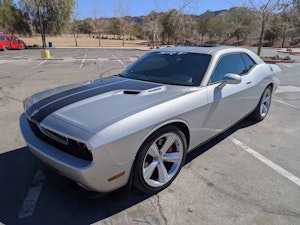
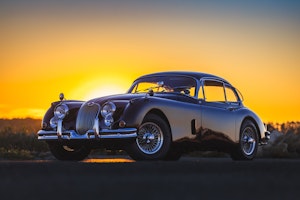







Is it some sort of editorial order-of-the-month that each staff writer must come up with some sort of “patina” column? 😁
Anyway, I agree with the last point: leave it alone and let it be natural. I love shiny cars, and I love MOST cars with patina (except that that is faked). Both types of exterior surfaces can be very visually interesting – as long as the vehicle itself is interesting to begin with!
The magazine edition was all about patina so we are getting the slow-release of those articles here.
That is correct.
My resources are limited. I choose to spend my money where it will have the greatest impact. I make sure the car is safe to drive, even slightly modified. New or repaired brakes, suspension, tires, lights, etc. Then I make sure the engine is up to scratch at a minimum or upgraded, if possible. Then I spend a few bucks on the interior to make it comfortable to use the car on long distances. I only buy cars which are basically solid and I seldom touch the exterior.
Here is my take on it. If that is what you want then do it.
Not my thing.
I must warn sone cars are easy to preserve with a coat of satin or flat clear.
But if you have a rust prone car like some of these BMW’s here I would recommend dojng sone restoration as these cars rust from the inside out.
You may save money doing the Patina thing but unless you live in San Diego or Reno you will continue to damage the car to where the struts will punch through the hood and other permanent damage will occur till the car is no longer restorable or even safe to drive.
I had a friend who bought a 2002 and was going to do the patina thing. It rotted till it was not even much good for parts.
I would leave the patina stuff to the rat rods that are often built in a safe manor and often are no where near the condition they appear. Often the rust is air brushed on.
If people feel so strongly that patina is wrong, they should start a rescue operation. A team of guerilla painters that find patina cars and paint them nicely while their abusive owner is away. I have an address they could visit first
A shiny pretty car has a remarkably equivalent level of appeal for me as an unmolested original that is mechanically sound and drivable. The trick is mechanically sound and drivable. I fully intended to drive my 65 Impala with all of its glorious patina, but I discovered that the bottom of the windshield frame was gone to the point you could see the wires in the dash – which prevented me from replacing the broken windshield. This led me to the inevitable discovery that the floor pans were gone and had been ‘replaced’ with a mesh of duct tape – which was the only thing holding the carpet up. I have been peeling that onion ever since, but that is part of the appeal with me. Eventually every patina’d car is going to require a major body repair, and you are going to have to walk the line of preserving what patina remains, or getting the rest of the car to match your repair.
I said it in a different patina thread here:
Kintsugi (traditional Japanese pottery repair with gold) is the approach I want to take with a very earned patina project we have been not starting for decades. This means all the old that can be kept will. What must be fixed for safety/legal (rockers) will be done right and done new.
No faking or “blending”. The contrast will be part of the story. I expect (if it ever makes the road) this will not be an approach endorsed by all.
—-
I was driving a 90s GM vehicle in original paint that was heavily shedding the clearcoat and first layer of paint of one of the two-tone colors. I ended up patch-spraying the exposed primer and a few spots breaking out in rust because I didn’t want holes right through. I got to drive it “original paint worn” for a few years, but I had to intervene. My brother has the vehicle now and is eyeing a repaint –the correct choice in this case to keep the vehicle good.
—
One of my vehicles is a decade into a flat black covering of the original “patina” –in this case original white breaking out from super-thin 70s blue cheap respray, that previous owner had sanded off half the vehicle, primed and let sit out in the weather. Sealing up that body was the best move I ever did. Now the flat black has its own patina…
I can appreciate the “second round of patina.” My ’83 Monte Carlo SS had an extensive respray back in 1990. The OEM Blue was crazing and needed to be sealed back up. We dutifully disassembled the car, painted it piece by piece, and then reassembled it. It was gorgeous for about 7 years … then I moved to TX. Over the ensuing 20+ years, the car has weathered in the TX sun when not in the garage. The current finish is a satin-ish blue with some rust poking out around the edges. In the past few years, I had thought of going through the disassemble, paint, reassemble process. However, every scuff and scratch on the car now has a meaning. I really don’t want to lose the history – and the kids in our neighborhood consider it an “old car” now!
Patina, pure and simple it’s rust.
Why do we dress up an issue to make it sound pretty?
It’s like cancer of the skin! 🙂
I don’t care for rust, so for me it would be a no. i would have to get it fixed/painted.
Webster’s definition: “usu. green film formed naturally on copper and bronze by long exposure or artificially (by acids) and often value aesthetically for its color.” 2nd def: “a surface appeareance of something grown beautiful esp with age or use.”
Sure words evolve, acquire new meanings. But rust is just rust and never “patina.”
Patina is just another word for neglect.
DRIVE the darn things and they will patina, a dent here, a nick there, a little “buffed through” paint. I am not big on the whole fake patina, or the barn find that you cannot disturb the dust and devalue it. Keep them the best you can but don’t accelerate it, or worse yet try to make it look better with “shine” products.
With ceramic coating all the rage these days, would it help to “preserve” the patina?
Sounds like the old song, “from my personal point of view, get an ugly girl to marry you.” Me, I enjoy pretty girls!
In the last 20 years I have owned a half dozen collectibles that I found in a variety of ways and they all shared two characteristics – they were much cheaper than a “good one”, and they always elicited the question “are you going to get it painted?”. The answer always turned out to be no. The main reason was probably money, but my being contrary is also a factor. There was also something kind of fun about driving a 356 roadster that had been owned by a hobbyist for 40 years and proudly wore the evidence of his slightly less than professional efforts at bodywork. similarly, my 1965 Land Rover looked exactly the way a 50 year old utility vehicle that was used as a utility vehicle would expect to look. I almost felt bad for the guys at the Pittsburgh vintage Grand Prix with their beautifully restored series 1 and series 2 cars because folks were just naturally drawn to this faded paint, ripped seat Land Rover that I bought by trading a quad and a couple of thousand dollars. All that said, if I managed to stumble on one that was beautifully finished for a similarly good price I would happily latch on to that too. There is plenty of room in our hobby for both approaches. And, lastly, of course the pendulum is ever swinging and I’m sure someday soon someone will scoff at patinated classics because, well, that’s just what people do.
This is great info. I was just contemplating what to do with my ‘57 Chevy 3200 PU truck with a GORGEOUS patina on him. I definitely want to keep the patina, but I was unsure about how to preserve it. EL VIEJO is my dream truck with my dream finish, so I’ll do whatever it takes to keep it that way!
My ’04 GTO is kept mechanically and safety wise in top condition. I replaced all the exterior lights with Eurospec LEDs, my brakes are Wilwood slotted rotors and the entire system is plumbed with stainless steel lines and braided connections. The body is in #3 condition, the TorRed paint is showing 20 years of wear, and I rebuff/clear the headlight lenses every spring. The replacement 7.0L LS engine is dressed in the original 5.7 covers, chipped/faded/dirty. All the factory 5.7 call-outs are on the car. Surprise! Watch those LED taillights recede.
I love this thing, and I love that it shows the two decades we’ve lived together. The B&M Ripshifter crunches the Tremec rather agriculturally, the McLeod clutch is heavy and grabby, the steel friction faced aluminum flywheel lets the LS 7.0 derivative spin up quickly. Oh, yes. Glorious noise.
The sun and age have caused the seat stitching to fail, CoverCraft seat covers fixed this; the glue holding the fabric to the molded headliner failed, my artist friend used thumbtacks to create an interesting and functional solution.
I dunno if it has “patina”; what I do know is that the Goat and I have aged together, we understand one another, and there’s not many of these Holden Monaro/Pontiac GTOs around. At the regional shows/cars&coffee, I’m often the lonely one. I’m unbelievably 63yoa- seems like yesterday I was 22. I bought the GTO as my last project, it will end up with my nephew when I finally go. Patina? Dunno. All the wear of use and great love is there. It’s enough for me.